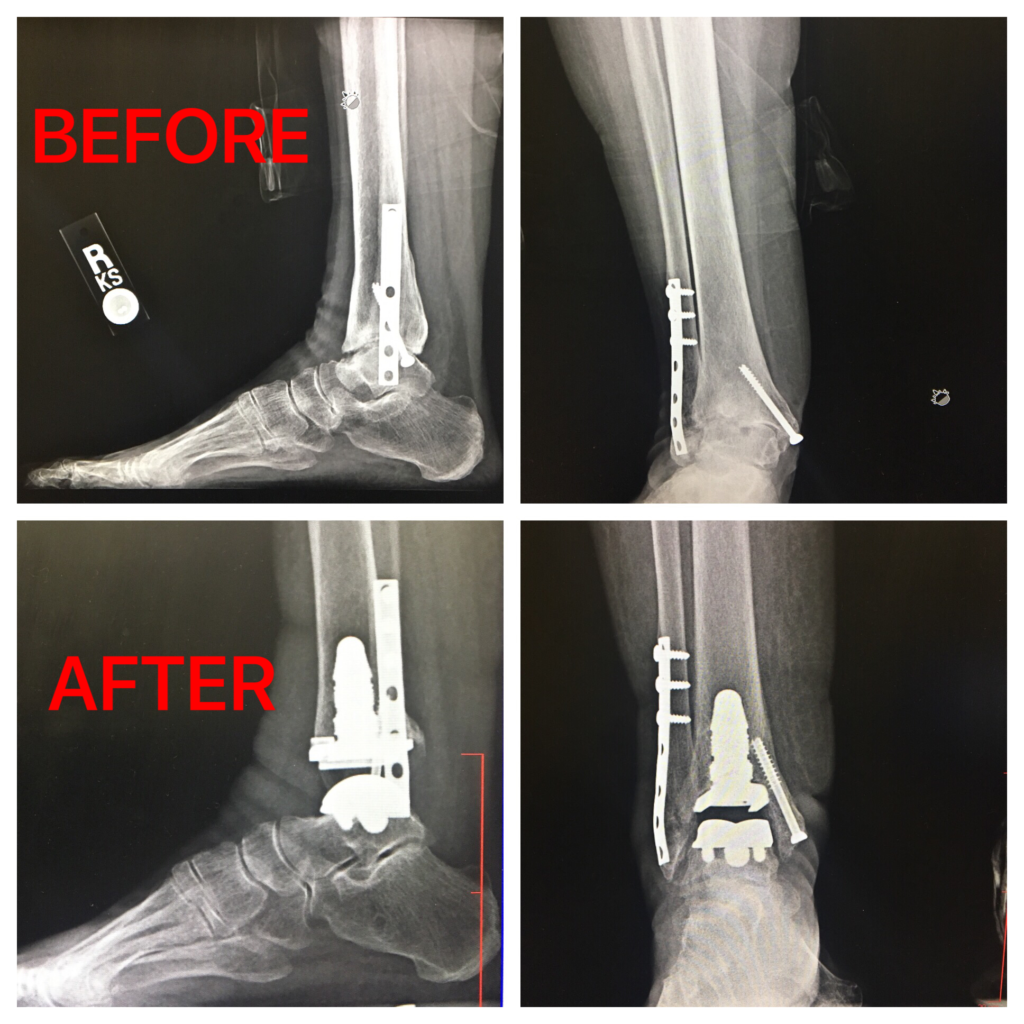
Arthritis can be debilitating to many of our patients, especially in the ankle joint. New technology is improving the success rate of total ankle replacement. Dr. McKean shares the story of his patient’s successful journey from painful, post-traumatic arthritis to her return to an active lifestyle.
In July 2014, Mrs. Delouise Johnson was picking figs in her backyard, a normal summertime activity for her. Unfortunately, she suffered a severe injury when she fell to the ground and the ladder crushed her right ankle. Mrs. Johnson was taken to the emergency room where she met Dr. Howard, an orthopedic specialist at The Orthopaedic Group who was the orthopedic surgeon on call on that warm, Sunday afternoon. Dr. Howard performed surgery on her ankle immediately. Mrs. Johnson was then referred to Dr. Engerson for post-op follow-up since he had treated her in the past for her shoulder.
Over the next two years, Mrs. Johnson developed post-traumatic ankle arthritis which continued to cause a lot of pain. “Dr. Engerson told me a new ankle doctor was coming to town and he thought Dr. McKean could really help me,” said Delouise Johnson.
Total Ankle Replacement
Dr. Matt McKean of The Orthopaedic Group, P.C., confirmed severe post-traumatic ankle arthritis in Mrs. Johnson’s right ankle, which developed as a consequence of her severe ankle injury in 2014. Dr. McKean performed a Total ankle arthroplasty (TAA), also known as a total ankle replacement, in November 2016. The goal of TAA is to improve ankle motion so the patient has less pain during activity. “Total ankle arthroplasty is an excellent alternative to an ankle fusion for those patients with severe end-stage ankle arthritis,” says Dr. McKean. “Although not everyone is an ideal candidate for ankle replacement, those who are good candidates can see excellent results in pain control while preserving ankle motion.”
Procedure
A total ankle arthroplasty (TAA) is performed either under general anesthetic or nerve block. The ankle is approached from the front or the side depending on the type of implant being used. Sometimes the patient will have a tight calf muscle or tight Achilles tendon that needs to be lengthened to improve range of motion of the ankle. The wounds are then closed using stitches or staples, and a splint is applied.
Rehabilitation
Mrs. Johnson spent three nights in the hospital after her ankle replacement surgery because strict elevation of her ankle was necessary for many days after the procedure to control swelling and improve wound healing. She continued non-weight bearing activities for three weeks and then with a cast on her ankle for an additional three weeks. At six weeks post op, Mrs. Johnson began outpatient physical therapy and was placed in an orthopedic boot for two to three weeks. She then spent 14 days in rehabilitation at a nursing home in Jackson, AL. After being discharged to go home, she continued her rehabilitation at a facility in Grove Hill.
“I recommend Dr. McKean and total ankle replacement surgery to anyone! It was truly an answer to my prayers,” said Mrs. Johnson. The number of ankle replacements being performed is increasing dramatically. This is a result of improved outcomes. Newer implant designs and improved surgical techniques are helping patients be more active after a TAA than they were previously.
“I was tired of hurting and the ankle replacement surgery was the cure!” Mrs. Johnson is back to doing all of the things she loved to do prior to her ankle injury, however, she has not gotten back up on a ladder to pick figs!
An orthopedic foot and ankle surgeon like Dr. Matt McKean of The Orthopaedic Group, P.C.’s Foot & Ankle Center, should be seen for management of ankle arthritis. Orthopaedic surgeons who specialize in foot and ankle surgery are specifically trained to perform ankle replacements as well as take care of any complications should they arise.
To learn more about Dr. McKean or to schedule an appointment, visit our website or call us at (251) 476-5050.
